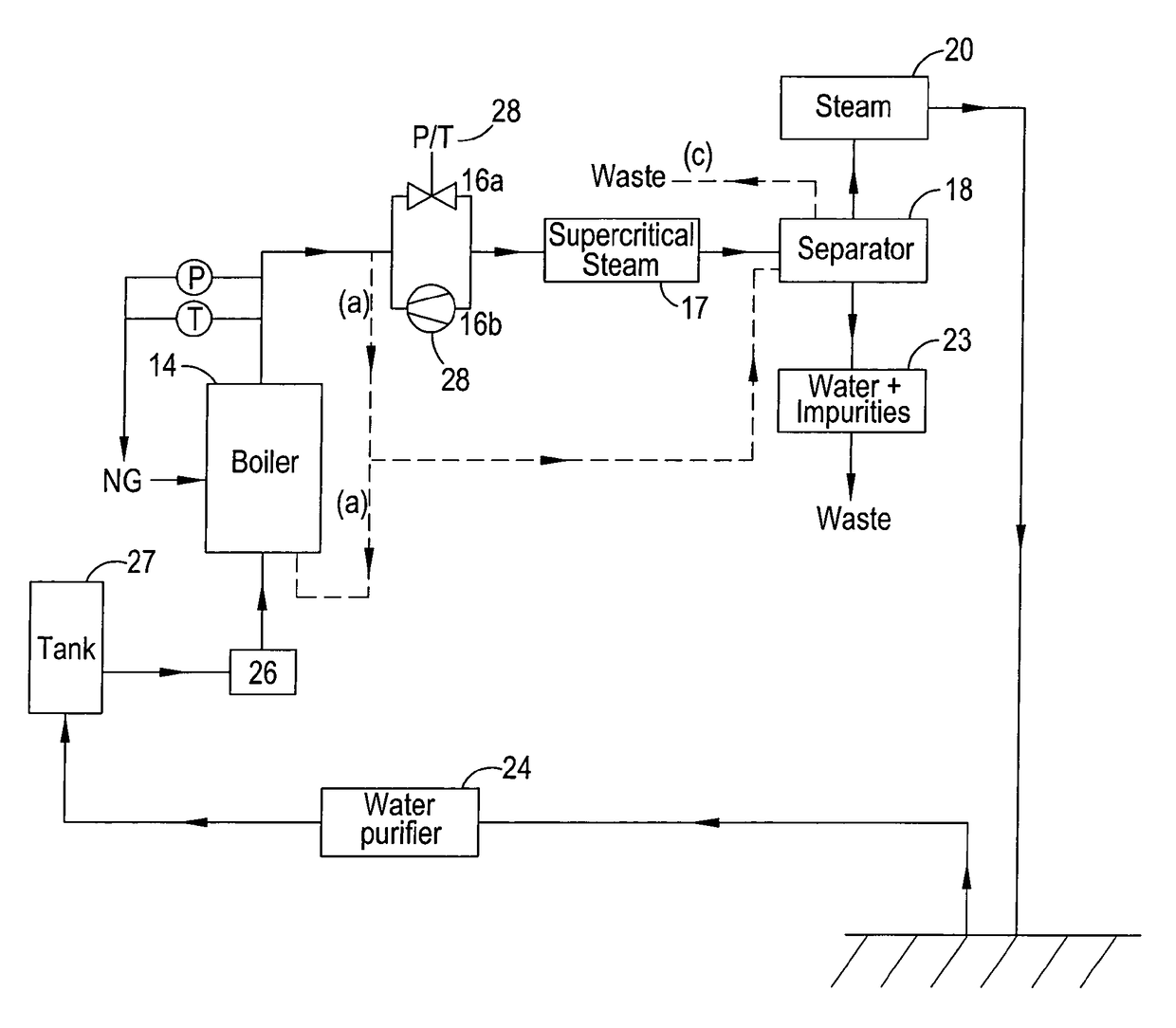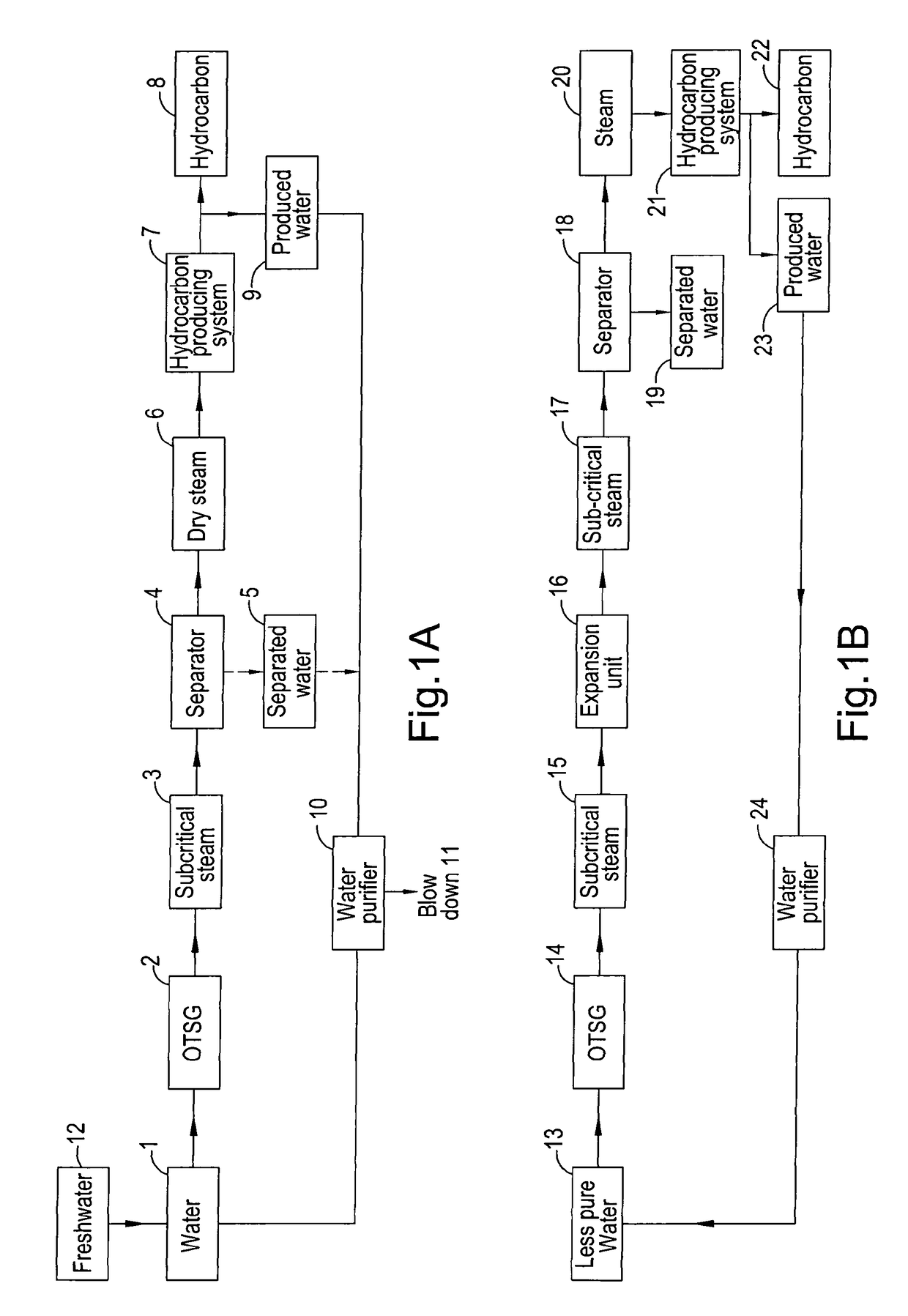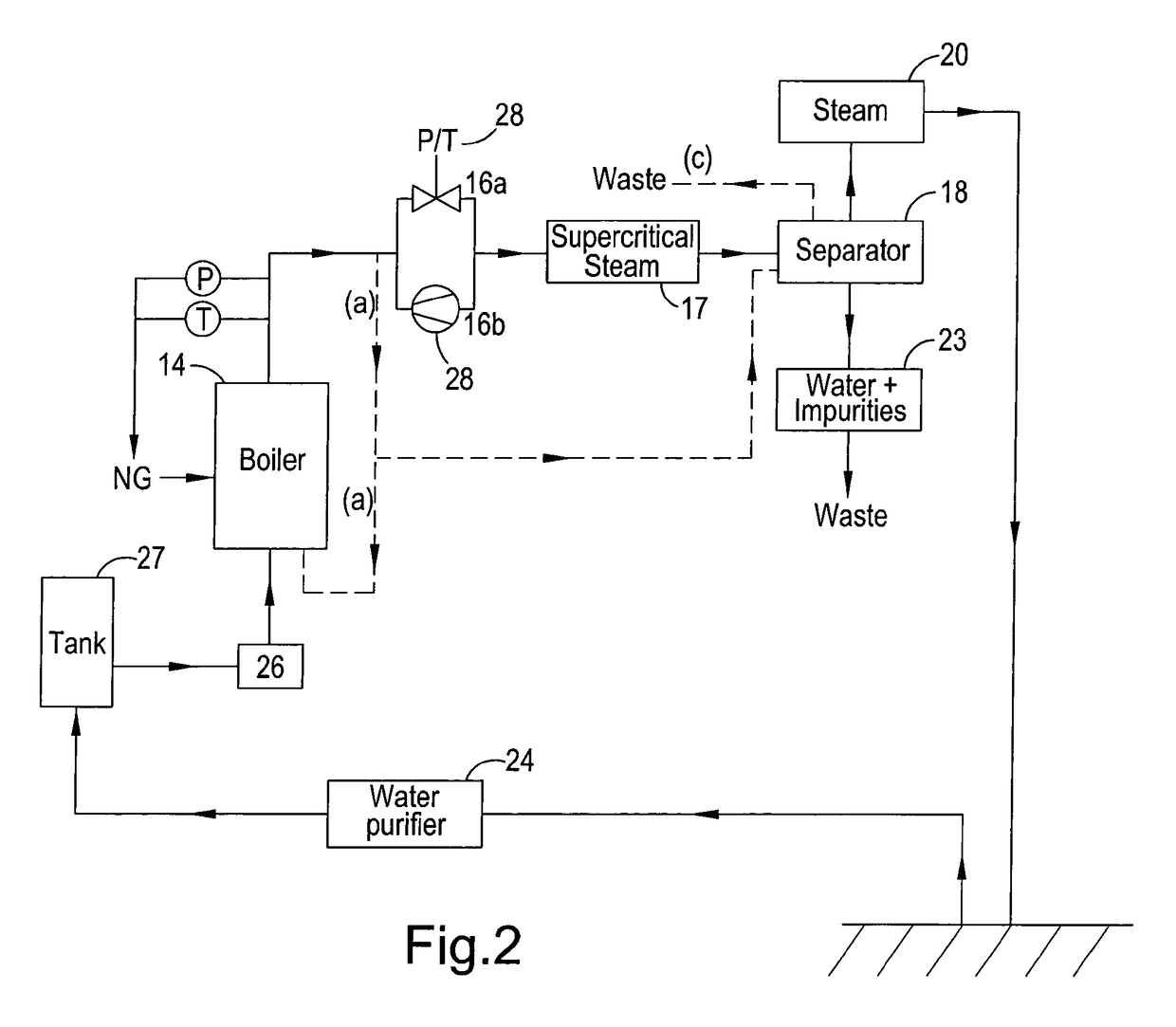Method and apparatus for generating steam for the recovery of hydrocarbon
a hydrocarbon and hydrocarbon technology, applied in the direction of steam superheaters, forced-flow steam boilers, fluid removal, etc., can solve the problems of reducing the strength of materials and their service life, heat transfer, and difficulty in native state pumping, so as to reduce the amount of fresh water, reduce the environmental impact of steam generation, and reduce the amount of blowing water
- Summary
- Abstract
- Description
- Claims
- Application Information
AI Technical Summary
Benefits of technology
Problems solved by technology
Method used
Image
Examples
Embodiment Construction
[0152]In FIGS. 1b, 2 and 3 features that are common are designated by the same reference numeral.
[0153]Referring to FIG. 1a, it shows a schematic diagram of the generation of steam by a conventional technique. Thus water 1, which is generally purified to a significant level, is pumped to a OTSG 2 wherein subcritical steam 3 is generated. Typically the OTSG 2 is operated under conditions that produce a steam quality of about 80%. Under such conditions the steam generator is less likely to run dry which leads to the production of significant amounts of precipitate that sticks to the heat transfer surfaces of the OTSG. The subcritical steam 3 is usually fed to a steam separator 4 to remove the water 5. The resulting dry steam 6 is fed to the hydrocarbon producing system 7 wherein it mobilises hydrocarbon to enable its recovery. When the mobilised hydrocarbon 8 is produced at the surface, significant amounts of water 9 is also produced. This water 9 comprises impurities, e.g. hydrocarbo...
PUM
 Login to View More
Login to View More Abstract
Description
Claims
Application Information
 Login to View More
Login to View More - R&D
- Intellectual Property
- Life Sciences
- Materials
- Tech Scout
- Unparalleled Data Quality
- Higher Quality Content
- 60% Fewer Hallucinations
Browse by: Latest US Patents, China's latest patents, Technical Efficacy Thesaurus, Application Domain, Technology Topic, Popular Technical Reports.
© 2025 PatSnap. All rights reserved.Legal|Privacy policy|Modern Slavery Act Transparency Statement|Sitemap|About US| Contact US: help@patsnap.com



